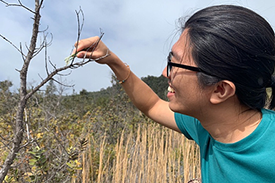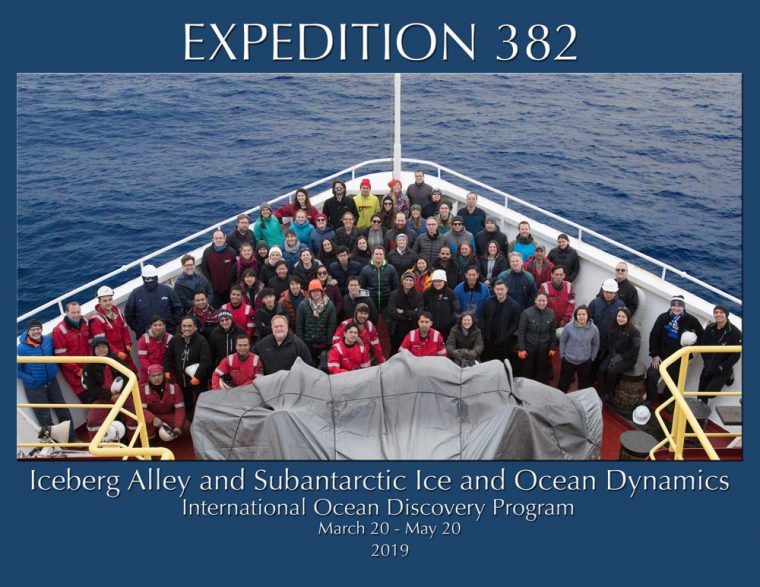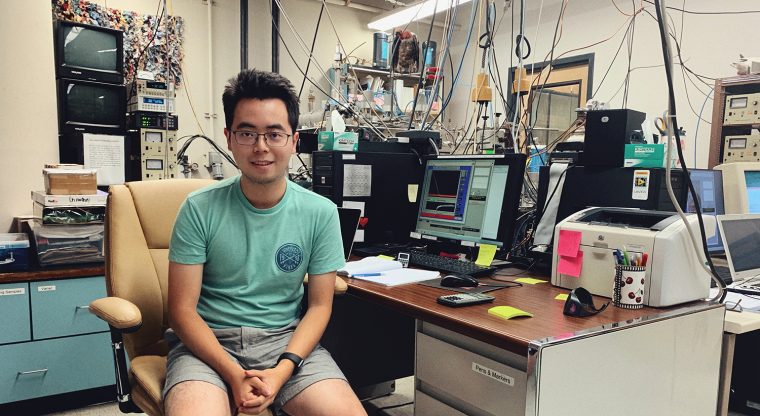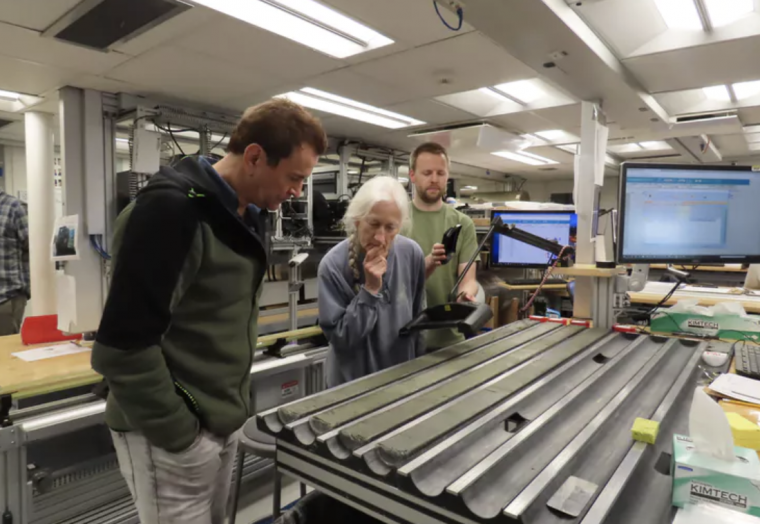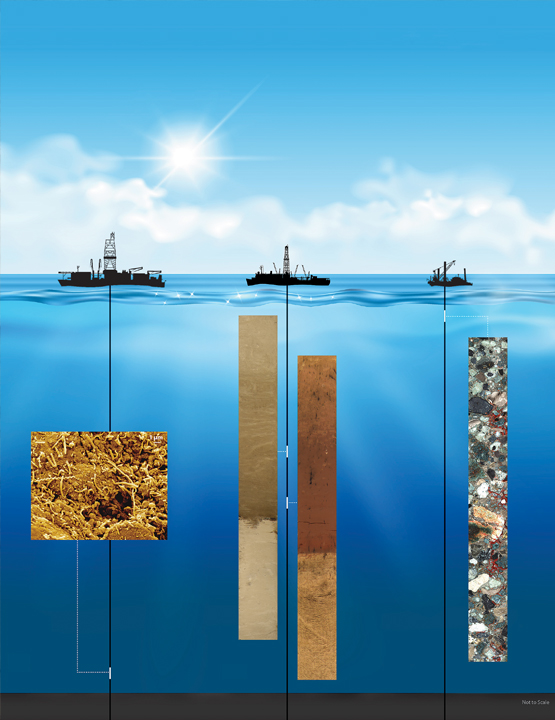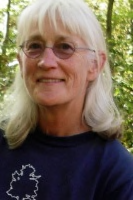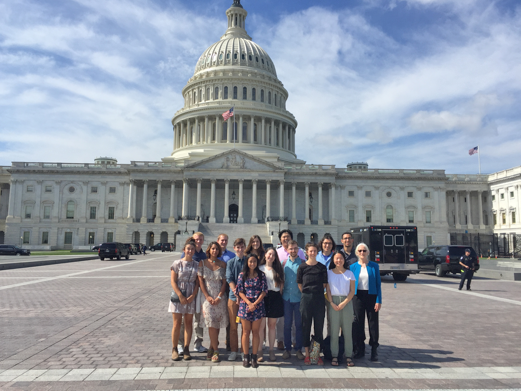Suzanne OConnell, professor of earth and environmental sciences, and Julian Dann ’17, a graduate student at the University of Alaska, Fairbanks, were both selected to be part of the American Geophysical Union’s 2021 Voices for Science Cohort. Hosted by the American Geophysical Union, Voices for Science aims to train scientists "to address the critical need for communicating the value and impact of Earth and space science to key decision makers, journalists, and public audiences," according to the union's website. Each cohort receives specialized training and mentoring throughout a 12-month period to hone their skills in communication and outreach. Throughout the…
Suzanne OConnell, professor of earth and environmental sciences, is featured on Vox Media’s podcast Unexplainable in a March 17 episode titled “Journey Toward the Center of the Earth.” The podcast explores unanswered scientific questions about mysterious aspects of the world and examines what scientists are doing to find answers. The episode with OConnell delves into a 20th-century quest to drill into the Earth’s layers through the ocean, specifically to learn more about a very dense region between the crust and the mantle called the Mohorovičić discontinuity, or the Moho. “Project Moho was a bust, but it lay a foundation for…
Sixteen earth and environmental science majors from the Class of 2020 recently conducted field research in Hawaii as part of their Senior Field Research course. The class, E&ES 498, is taught by Tim Ku, chair and associate professor of earth and environmental sciences, and Suzanne O'Connell, professor of earth and environmental sciences. The course is open to students who completed E&ES 497: Senior Seminar, and focuses on improving scientific research skills. Past classes have conducted research in Death Valley, Calif., the main island of Puerto Rico, the Connecticut River Valley, and the Big Island of Hawaii. The field research took…
In this recurring feature in The Wesleyan Connection, we highlight some of the latest news stories about Wesleyan and our alumni. Wesleyan in the News 1. The Nation: "Edward Snowden Deserves to Be Tried by a Jury of His Peers, Just Like Everyone Else" In this op-ed, Associate Professor of Government Sonali Chakravarti argues against the Justice Department's decision to deny Edward Snowden's request for a jury trial. She contends that in Snowden's case, in which he is accused of leaking classified information from the National Security Administration in 2013, a jury trial "is not only a viable alternative to a hearing…
Wesleyan faculty frequently publish articles based on their scholarship in The Conversation US, a nonprofit news organization with the tagline “Academic rigor, journalistic flair.” Professor of Earth and Environmental Sciences Suzanne O'Connell has written a new article for The Conversation's "Curious Kids" series answering the question "How deep is the ocean?" The article is based on her research studying the sea floor. Curious Kids: How deep is the ocean? Explorers started making navigation charts showing how wide the ocean was more than 500 years ago. But it’s much harder to calculate how deep it is. If you wanted to measure the…
As campus was winding down for spring break last semester, Professor of Earth and Environmental Sciences Suzanne O’Connell was packing her bags for a two-month expedition in the Scotia Sea, just north of the Antarctic Peninsula, to drill for marine sediment miles below the ocean waves. On her ninth expedition since 1980, O’Connell was one of 30 international scientists working 12 hours a day, seven days a week, navigating “Iceberg Alley” aboard the JOIDES Resolution research vessel. It is the only ship in the world with coring tools powerful enough to extract both soft sediment and hard rock from the…
For two weeks this summer, Donglai Yang ’21 used isotope dating of rocks, minerals, and sediments from the Weddell Sea near Antarctica to determine the age of a section of Earth's southernmost continent. Yang, an earth and environmental sciences and physics double major, was selected as one of 10 undergraduate and graduate students from around the world to participate in the National Science Foundation–sponsored Antarctichron/Chronothon 2019 workshop held June 24 to July 8 at the University of Arizona. The workshop introduced participants to geo- and thermochronology through some applications to the geology of Antarctica. Students learned to analyze and interpret their own…
In this recurring feature in The Wesleyan Connection, we highlight some of the latest news stories about Wesleyan and our alumni. Wesleyan in the News The New York Times Magazine: I'm 20. I Have 32 Half Siblings. This Is My Family Portrait. Eli Baden-Lasar '22 always knew he was conceived using a sperm donor, but he didn't discover he had half siblings until he was 19. He went out searching for them and found more than 30 young men and women around the country. In this photo essay, he writes about the experience of meeting his half siblings. Photo portraits he took…
Wesleyan faculty frequently publish articles based on their scholarship in The Conversation US, a nonprofit news organization with the tagline, “Academic rigor, journalistic flair.” In a new article, Professor of Earth and Environmental Sciences Suzanne O'Connell writes about her work on board the JOIDES Resolution research vessel in the Scotia Sea, drilling for sediment core samples to study how much and how fast the Antarctic ice sheets melted between 2.5 to 4 million years ago, the last time atmospheric CO2 was at the same level as today. (Read more about O'Connell's experience in this AAAS article.) 60 days in Iceberg Alley, drilling…
Suzanne O'Connell, professor of earth and environmental sciences, is the author of a cover article titled "Holes in the Bottom of the Sea: History, Revolutions, and Future Opportunities," published by the Geological Society of America (GSA) Today in January 2019. Scientific ocean drilling (SOD) contributions include geophysical surveys, core samples, borehole well logs, and sub-seafloor observatories. After more than half a century, involving thousands of scientists from around the world, SOD has been instrumental in developing three geoscience revolutions: (1) plate tectonics, (2) paleoceanography, and (3) the deep marine biosphere. In this paper, O'Connell explains that without SOD, it is unlikely…
Wesleyan faculty frequently publish articles based on their scholarship in The Conversation US, a nonprofit news organization with the tagline, “Academic rigor, journalistic flair. In a new article,Suzanne O'Connell, professor of earth and environmental sciences, writes about the important findings that have resulted from 50 years of scientific drilling on the ocean floor—and how much is still unknown. Scientists have been drilling into the ocean floor for 50 years – here’s what they’ve found so far It’s stunning but true that we know more about the surface of the moon than about the Earth’s ocean floor. Much of what we do…
Students enrolled in the Oceans and Climate service-learning course recently traveled to Washington, D.C., where they had the opportunity to learn how legislation related to climate change is moved through Congress. The trip, held Sept. 25-26, was led by Suzanne O'Connell, professor of earth and environmental sciences, faculty director of the McNair Program. After a day of travel and overnight stay, the group took an early Metro ride to the Library of Congress in Washington, D.C., where they met with representatives of the Congressional Research Service. Later that morning, the class traveled to the Dirksen Senate Building, which houses the U.S. Senate…



